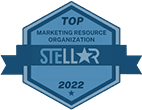By Tim Rasmussen, Principal, Rivet|MRO
As tariff increases ripple through global supply chains and reach the retail shelves, the pressure is mounting—not just on manufacturers and large retailers, but critically on independent distributors. Whether it’s tools, fasteners, industrial parts, or maintenance supplies, the cost to stock and sell is going up, and consumers are feeling it.
In this shifting landscape, the response from the independent distribution sector must be rooted not just in operational agility, but in empathetic, transparent, and value-oriented strategies. According to a new Gartner study cited by Marketing Dive, empathy isn’t just a “nice-to-have” in your messaging—it’s a business imperative. Here’s what that means for you.
Understand the New Customer Mindset
Recent data shows 70% of U.S. consumers are already adjusting how they spend, even before many of the anticipated 2025 tariffs take full effect. Some are switching to private label brands. Others are reducing order sizes or putting off purchases entirely.
As a distributor, this signals a need to reframe your customer engagement strategy. Whether your customers are small contractors, mid-sized shops, or end users, they are likely feeling pinched. Acknowledge this shift and show that you see them—not just as purchasers, but as people navigating economic uncertainty.
Action Steps:
- Include customer-centric messaging in email marketing and line card updates.
- Consider surveys or informal feedback loops to understand what matters most to buyers now.
- Train customer-facing reps to listen for pain points and respond with empathy, not just price lists.
Reaffirm Your Core Value Proposition
When price pressures rise, it’s easy to race to the bottom. But in times of uncertainty, many buyers are not just looking for “cheap”—they’re looking for value and reliability. This is where independent distributors can shine.
Emphasize what makes your business different:
- Your ability to deliver solutions, not just product
- Local expertise
- Fast, dependable delivery
- Technical support and personal relationships
- Stock availability in categories others have trimmed
Gartner recommends “re-grounding your brand in familiar values.” In distributor terms, that means reinforcing your reputation for doing the right thing, solving problems, and being there when it counts.
Action Steps:
- Share customer success stories that highlight how you went the extra mile.
- Use signage, packaging inserts, or invoices to remind buyers what sets you apart.
- Review your website and digital channels for consistency in messaging and tone.
Be Transparent About Pricing and Supply Chain Disruptions
Price increases and lead-time variability are sometimes unavoidable during tariff transitions. But customers respond far better when they’re informed ahead of time.
Proactive communication doesn’t mean defensiveness—it means education. Let buyers know when and why costs are changing, what’s causing it (e.g., imported steel, electronic components), and what you’re doing to offset the impact.
Action Steps:
- Issue tariff impact updates on key categories.
- Build “what to expect” resource pages or email campaigns.
- Equip your sales teams with talking points and reference material to guide conversations.
Use “Permission Structures” to Reduce Friction
Borrowing a concept from behavioral science, the article introduces the idea of “permission structures”—tools that help customers justify spending in a constrained environment. These might include:
- Money-back guarantees
- Free shipping thresholds
- Loyalty programs with tangible perks
- Risk-reducing bundles or starter kits
These small shifts can ease purchasing anxiety and keep your customer engaged, even when the economy says “wait.”
Action Steps:
- Experiment with simple promotions tied to order thresholds or product lines.
- Reinforce ease-of-doing-business in your value pitch.
- Position bulk buys or kits as smart cost-saving moves.
Highlight Domestic and Local Advantages
Tariffs often impact goods from specific regions or categories. If you carry U.S.-made products, locally sourced materials, or stock from unaffected countries, spotlight them. This isn’t about stoking nationalism—it’s about providing reliable alternatives.
More customers today are actively seeking products with lower risk of disruption. As an independent distributor, your sourcing flexibility and responsiveness are competitive assets.
Action Steps:
- Create promotional materials for domestic or tariff-free product lines.
- Offer guidance to customers on navigating substitution opportunities.
- Leverage local or regional identity in your marketing (e.g., “Stocked and shipped from Denver”).
Prepare for the Long Game
Tariff shocks don’t always hit all at once—but they linger. It’s likely that some changes in consumer behavior (e.g., smaller orders, slower restocks) may stick around longer than the tariffs themselves.
Now is the time to build lasting trust. Distributors who combine operational savvy with emotional intelligence—those who can deliver on both price and principle—will be best positioned to not only weather the turbulence, but thrive beyond it.
Final Thought: Don’t Just Sell—Support
Independent distributors are more than middlemen. You’re connectors, problem-solvers, and educators. In a tariff-shaken economy, those roles matter more than ever.
Take the long view. Speak with empathy. Communicate clearly. And keep delivering the value that only a trusted local partner can provide.
Sources:
- Gartner Consumer Insights 2025
- Marketing Dive: How marketers can respond with empathy to consumer tariff shocks











